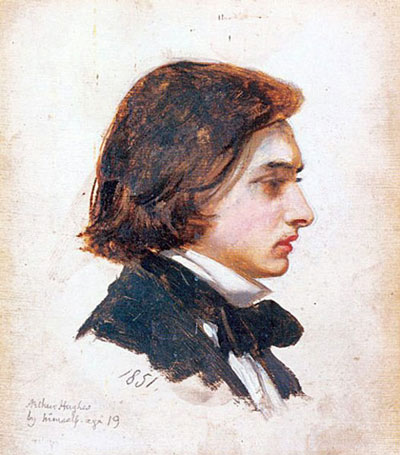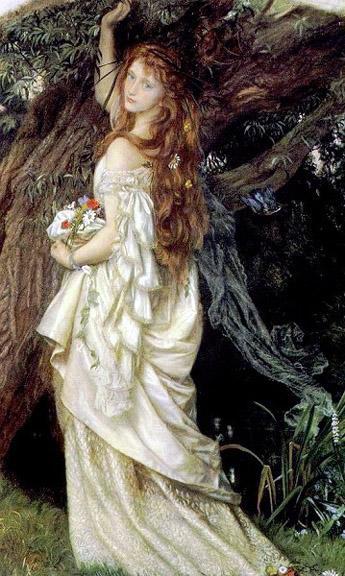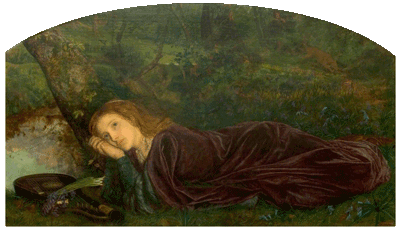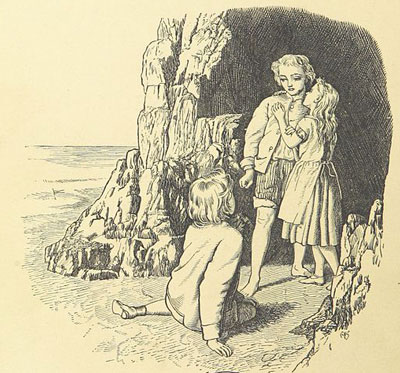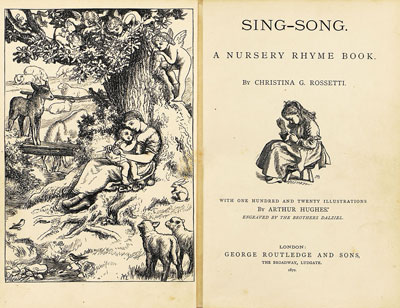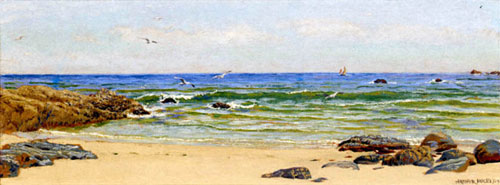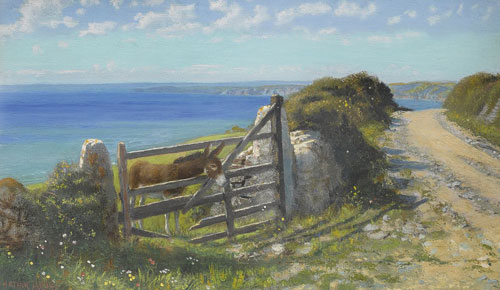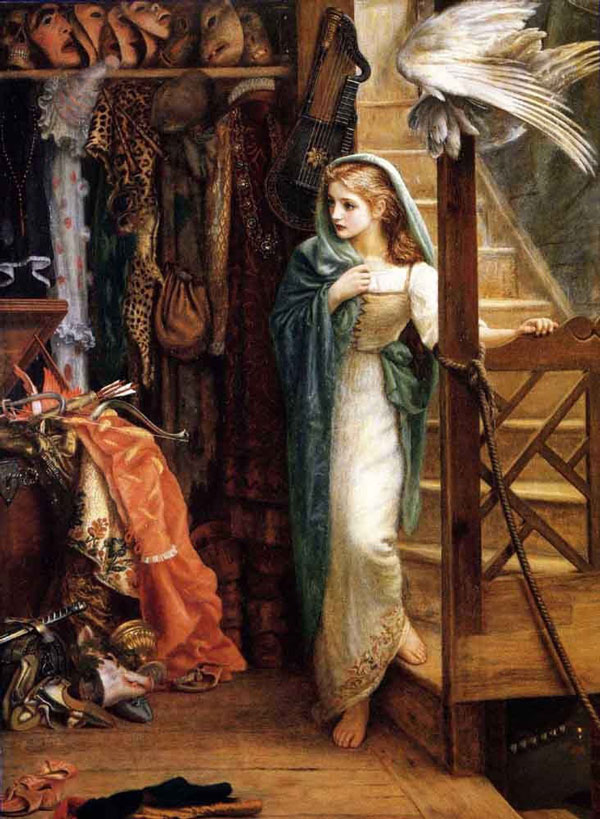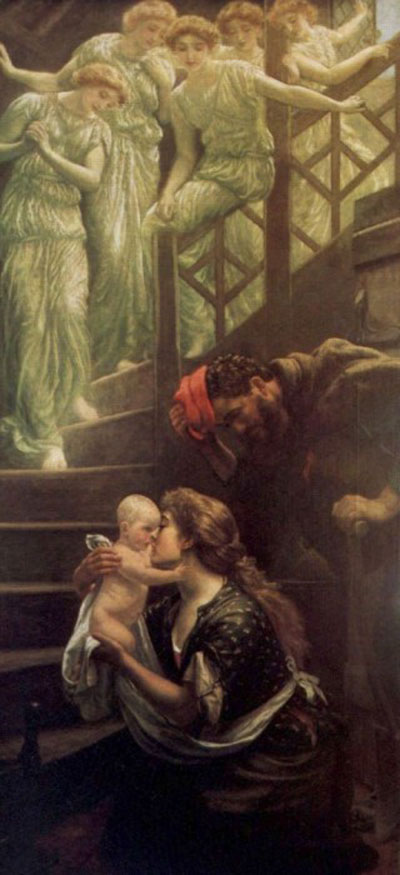Meaning
Should we take it at face value? Is it just a charming and technically brilliant piece of Victorian draughtsmanship? Or is there an additional meaning to it, a message? Well, of course! It wouldn’t be Hughes if there wasn’t a message. His paintings, in the best tradition of the Pre-Raphaelites, invariably urge us to delve deeper.
The Stage
Since at least the days of Shakespeare, the stage has been a metaphor for the transient earthly life.
‘All the world’s a stage,
And all the men and women merely players;
They have their exits and their entrances,
And one man in his time plays many parts’
(‘As You Like It’ Act II Scene VII)
Stairs
Stairs in paintings, meanwhile, are usually associated with the middle ground between heaven and earth: the ‘stairway to heaven.’ In this case, however, Hughes has reversed things. The stairway here is from heaven. The young woman in the painting is the spirit that has descended into matter at the moment of birth. She, barefoot, is able to explore and to take upon herself any role or costume she likes. A time of beginnings and infinite possibilities for the drama of life that awaits her.
Only the presence of the rope (lower right) leading down into a comparatively dark and menacing space below the theatre, sounds a cautionary note. It is to remind the viewer, perhaps, of the perils of earthly existence. Life can not only elevate the creative spirit, but can also sometimes drag it down. The Victorians, of course, would have been perfectly conversant with this kind of symbolism.
Similarly, with the white wings lodged upon the banisters, to remind us of the Holy Spirit. All very much in tune with prevailing Christian symbolism at the time, and therefore something to ponder and to learn from.
A recurring theme
This is, in fact, a recurring theme in the work of this artist and others of the era. By way of confirmation of what Hughes is aiming at, we can take a quick look at another of his works. A later work than the Property Room, and a little more sentimental in nature perhaps, but just as persuasive. It is entitled ‘Little one who straight has come down the heavenly stair.’
‘The Heavenly Stair’ by Arthur Hughes, 1888.
Here a newborn has just been shepherded down the heavenly stairs by a whole host of angelic beings. (Not sure whether this accurately represents every Victorian woman’s experience of childbirth. But I do love the way the angels are all smiling and cheerful. A happy event!)
Family man
Hughes seems to have been a contented and happily married man. He had 6 children by his wife Tryphena, and was a great exponent of figure painting, including those of childhood and youth. This one, like many of his works, was presented with a poetic inscription – from William Wordsworth’s Ode ‘Intimations of Immortality.’
‘Our birth is but a sleep and a forgetting:
The Soul that rises with us, our life’s Star,
Hath had elsewhere its setting,
And cometh from afar:
Not in entire forgetfulness,
And not in utter nakedness,
But trailing clouds of glory do we come
From God, who is our home.’
A fitting epitaph
Arthur Hughes passed away in London’s Kew Green in December 1915. William Michael Rossetti later wrote of him: “If I had to pick out, from amid my once-numerous acquaintances of the male sex, the sweetest and most ingenuous nature of all, the least carking and querulous, and the freest from ‘envy, hatred and malice’ … I should probably find myself bound to select Mr.Hughes.”
